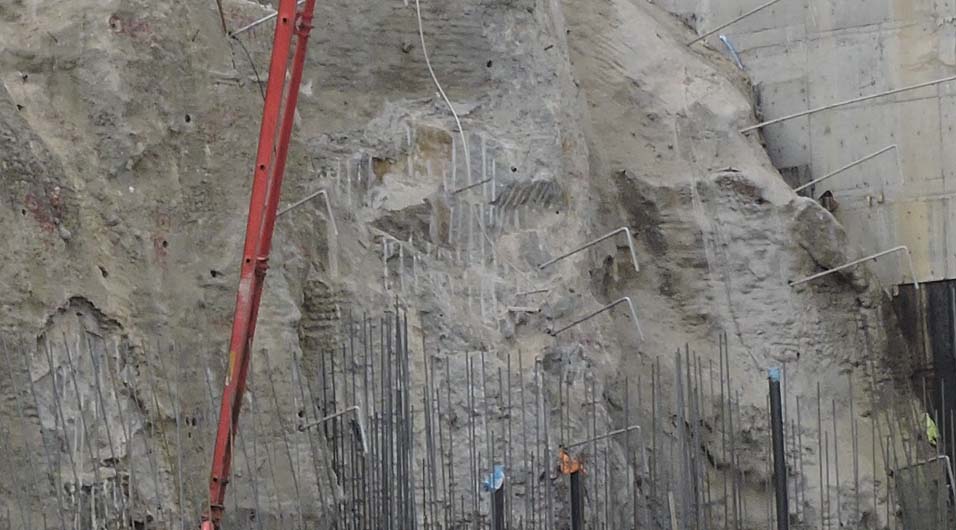Soil bearing capacity, soil properties, soil skin friction, rock skin friction, end bearing of rock, etc. should be available to design foundations. Depending on the type of foundation, the relevant parameters should be obtained from the geotechnical investigation.
Design of Shallow Foundations
Footings and raft foundations can be identified as shallow foundations.
The bearing capacity of the soil should be available to design the foundation.
Based on the area of the building or as per the layout of the structure, the number of tests that need to be done will be decided by the engineer.
Soil investigation (geotechnical investigation) is done to cover the whole area of the building.
There are different types of tests done to obtain the capacity of the soil.
Mackintosh test, Plate baring test, Standard Penetration Test, Cone Penetration Test, etc. are done to obtain the bearing capacity of the soil.
Standard penetration test (SPT) is done commonly to evaluated the condition of the ground.
Classification of the soil under the foundation and thicknesses of each layer can be identified with this test.
Usually, when it is certain that there won’t be very weak soil such as peat underneath layers, all the boreholes are done up to the fresh rock level.
Based on the results obtained by testing the soil and by the visual inspection of the samples taken during the testing, soil parameters are obtained.
Ultimate bearing capacity can be evaluated depending on the dimensions (shorter) and the loading of the structure.
Other tests such as Mackintosh and plate bearing are no much reliable tests as there are certain accuracy issues. Especially, the plate bearing test does not encounter the condition of the underneath layers.
Therefore, if the loads are higher and condition of the ground seems to be weak, it is advisable to do a test like a standard penetration test(SPT).
Geotechnical Investigation for Design of Deep Foundations
Pile foundations are considered a deep foundation. Mainly, they can be categorized as friction piles that are not socketed into the rock and the pile socketed into the rock.
Rock is not close to the ground in some of the countries.
The depth to the rock is around 400m in some countries.
In this background, piles can not be socketed into the rock and it is not necessarily required to socket the pile into the rock.
Plie can be terminated where it satisfies the design requirements.
Skin friction of the soil and end bearing of the soil where the pile is terminated is considered for the design when we can not terminate in the rock.
When the pile can be socketed into the soil, skin friction of the soil and rock and end bearing of the rock obtained from the geotechnical investigation report can be used for the design.
Based on the type of the rock/soil, skin friction is determined and the end bearing of the rock is evaluated form the uniaxial compression test (UFC).
Usually, the borehole layout is planned based on the area covered by the structure.
The selection of the foundation could be done as guided in the article on how to determine foundation type.


![Tunnel Design [a guide to designers]](https://www.structuralguide.com/wp-content/uploads/2019/11/Tunnel-1-1024x599.jpg)